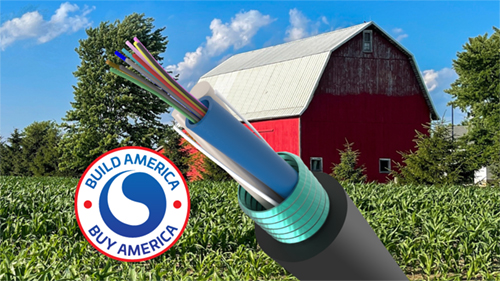What are the Benefits of Fiber Optic Cables?
Fiber optic cables have revolutionized the way we transmit data, offering greatly improved speed and reliability compared to traditional copper cables. These cables use light to carry information, resulting in faster and more efficient communication.
Key Takeaways
-
High-Speed Transmission: Fiber optics use light to transmit data, enabling much faster speeds and lower signal loss than traditional copper cables.
-
Enhanced Reliability: These cables resist electromagnetic interference and environmental stress, making them dependable in both indoor and outdoor environments.
-
Greater Bandwidth: Fiber supports significantly higher data capacity, which is ideal for bandwidth-intensive applications like streaming and cloud computing.
-
Low Latency: Fiber networks deliver data with minimal delay, which is essential for real-time services such as video conferencing and online gaming.
-
Future-Ready Infrastructure: Fiber optic systems are scalable and support emerging technologies like 5G and IoT, making them a long-term solution for growing network demands.

High-Speed Data Transmission
Fiber optic cables provide exceptional speed and bandwidth, making them well-suited for high-performance networks. Unlike traditional copper cables, fiber optics allow for significantly faster transfer rates and reduced signal loss over long distances.
Enhanced Reliability
Fiber optic cables are less susceptible to electromagnetic interference and environmental factors such as temperature fluctuations and moisture. This makes them a more reliable option for maintaining consistent network performance, especially in demanding industrial or outdoor environments.
Greater Bandwidth Capacity
Compared to copper cables, fiber optics offer a much higher bandwidth capacity, enabling the transmission of large amounts of data without congestion. This is particularly beneficial for applications such as video streaming, cloud computing, and large-scale data centers.
Reduced Latency
Networks today don’t only have to provide very large bandwidth capacity, they also have to deliver the information in real time, Fiber Optic networks boast the lowest latency of all delivery technologies which is critical to meet todays and future application needs
Improved Security
Since fiber optic cables transmit data using light rather than electrical signals, they are more difficult to tap into or intercept. This enhances data security, making fiber optics a preferred choice for sensitive communications and secure networks.
Durability and Longevity
Fiber optic cables are designed to withstand harsh conditions, including extreme temperatures and physical stress. Their robust construction ensures long-term reliability, reducing maintenance costs, and the need for frequent replacements.
Future-Proof Technology
As technology continues to evolve, fiber optic cables provide a scalable and future-proof solution. They support emerging technologies such as 5G, IoT, and cloud computing, helping networks remain efficient and adaptable to future demands.
Sustainability
Due to the very nature of a Passive Optical Network, the network elements do not require power and therefore can greatly reduce electrical consumption leading to reduced Operational costs and reduced environmental impact
As technology continues to advance, the demand for high-speed internet and data transfer has grown exponentially, making fiber optic cables an essential component in modern infrastructure.




